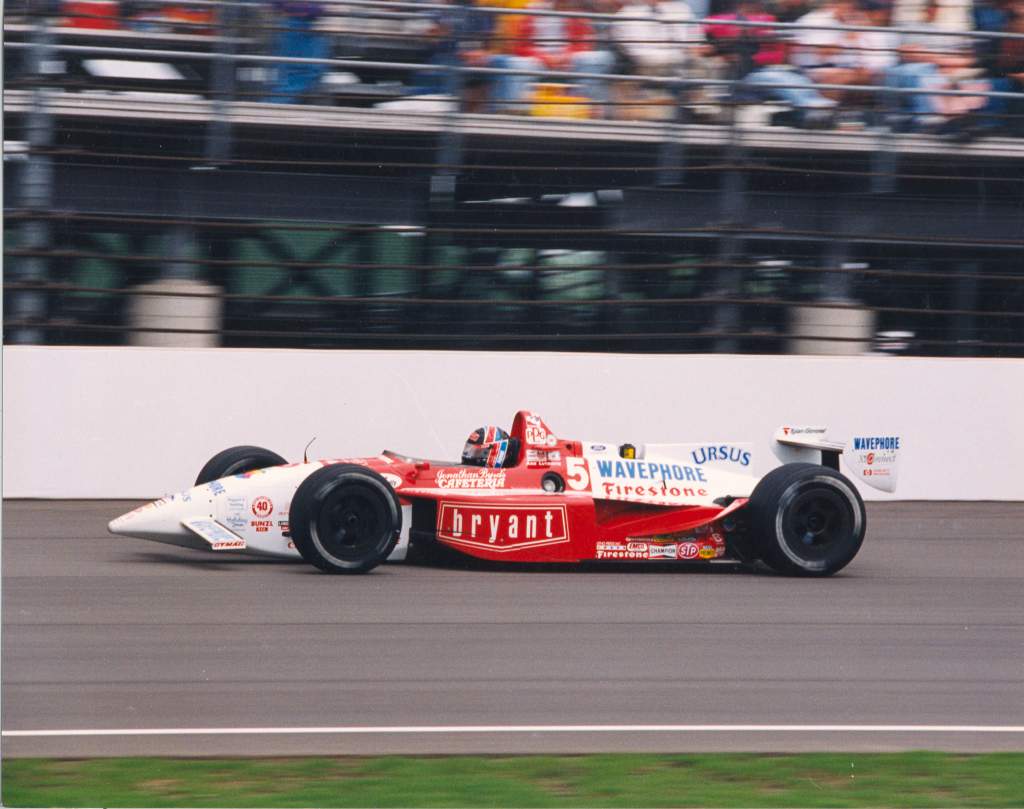Imagine crossing the line of bricks at one of the world’s fastest and most prestigious motor races to set the fastest lap in its then-85-year history.
Only it’s not actually for pole for the Indianapolis 500, it’s for 20th on the grid!
That’s exactly what happened to legendary IndyCar driver Arie Luyendyk 25 years ago in 1996.
He set the best four-lap run in the history of the 500 at an average speed of 236.986mph. No, that’s not a typo, that’s an average speed over four laps.
It came as IndyCar racing’s messiest era was just beginning, as the years of tension between the CART organisation that had run what was then the Indycar World Series since 1979 and the Indianapolis Motor Speedway ownership and Indy 500 sanctioning body USAC overflowed.
IMS chief Tony George launched a breakaway all-oval series, the Indy Racing League, which included the Indy 500, CART stood its ground, and a damaging split ensued until 2008.
Luyendyk found himself on the IRL side of the fence. But the 1990 (and later 1997 too) Indy 500 winner was trying to stay out of the fight.
“I’ve never been one for politics so I never got involved in that whole deal,” Luyendyk tells The Race in an exclusive interview about 1996.
“I said to myself, ‘hey, I want to race at Indy. I want to be competitive and I can still be competitive with this team if we build it the way I think we’re going to build it’, so I made that move.
“I didn’t really care who showed up to race at Indy that year. I didn’t really care if, let’s say Michael Andretti would show up, and all of the CART guys, I still feel I could run up front. So that was not the issue.
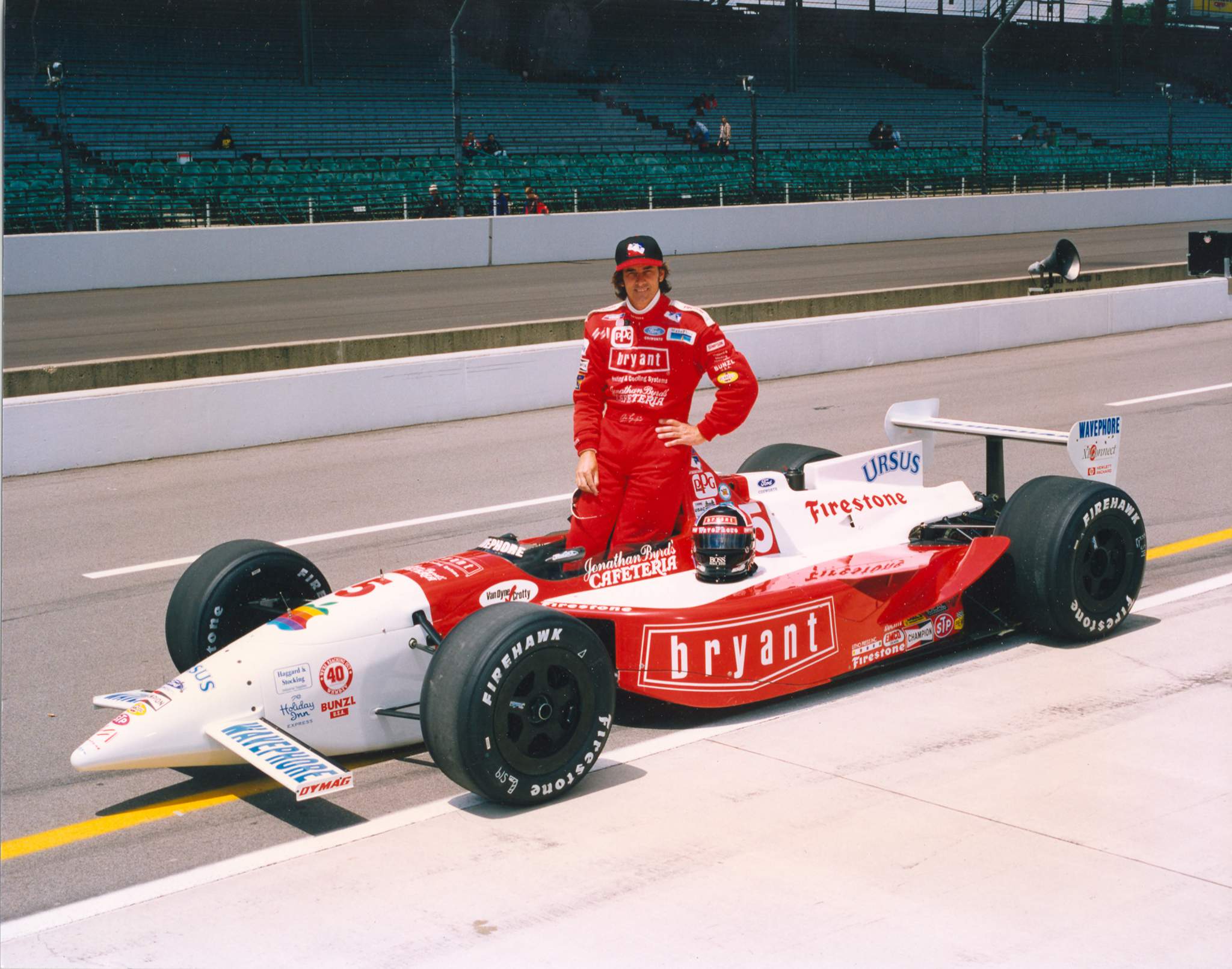
“The issue was I still wanted to run 500. As it turned out, it was a mixed bag of a lot of entries with older cars and there was a lot of stuff going on but there were a lot of competitive guys there.”
The IRL created its own normally-aspirated rules package, but the cars for this era wouldn’t be ready until late 1996, so the initial three-round season at the start of the year was populated by ex-CART Reynard or Lola chassis mated with a choice of the Ilmor Mercedes, Cosworth XB or Buick – now labelled Menard – powerplants.
Luyendyk hadn’t had any good offers to race in CART, not from top teams anyway, and instead he took one of the biggest risks of his career – at the age of 42 – by joining the brand new Byrd-Treadway Racing team.
Seats for the IRL were not difficult to come by with most established top drivers committing to CART but teams including AJ Foyt’s operation and top Indy 500 squad Menard going for the IRL. But Luyendyk still chose to build a new team.
They won together second time out at Phoenix – breaking the track record and hinting at the speed which would be unleashed at Indianapolis – with pole and fastest lap too, and coming into the Indy 500 everything looked absolutely perfect.
Luyendyk was given total freedom over his personnel and he called in the legendary ex-Formula 1 and IndyCar regular Tim Wardrop (pictured in later years below) to spearhead the team. That decision paid off in spadefuls once the action at Indy got underway.
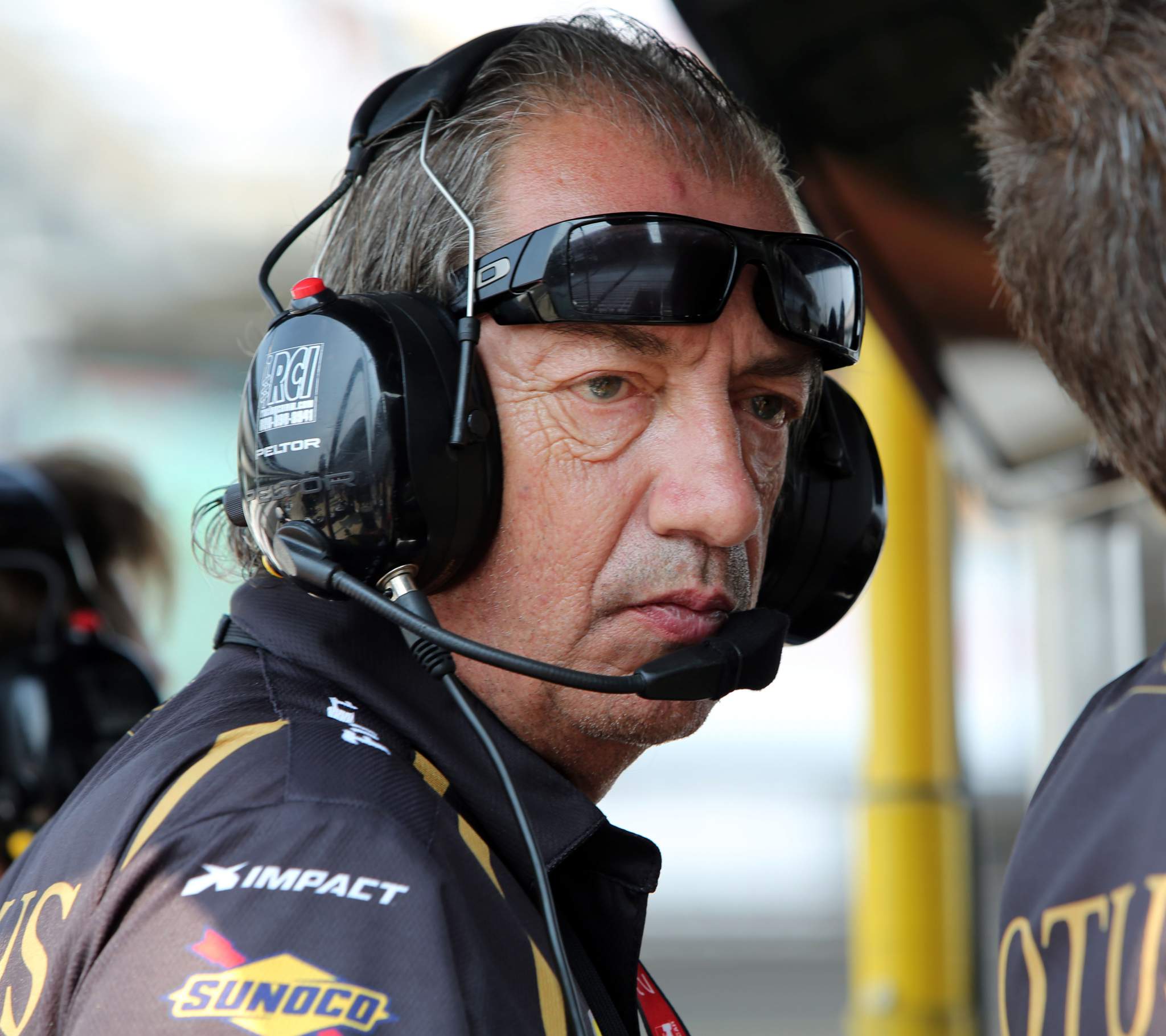
“I’ll say that year, the car was pretty much the best car I ever drove at the Speedway as far as handling,” Luyendyk (below centre) recalls.
“I never had a moment with that car. Sometimes you get a little bit out of shape during practice, with any of the cars that I drove. But with this particular car, it just was always spot on, it just couldn’t be any better. It gave me so much confidence.
“So all these things and all these feedbacks that I got from the car and that I relate to Tim, we were just fine tuning and making the car perfect.
“To the point where Tim said, do you think we can take the wing [level] off the back?
“My words were exactly ‘fuck you, you’re not driving!’.
“We had a little bit of fun with that but I said no, we’re not going to take the wing off! I was tempted, but no I didn’t.”
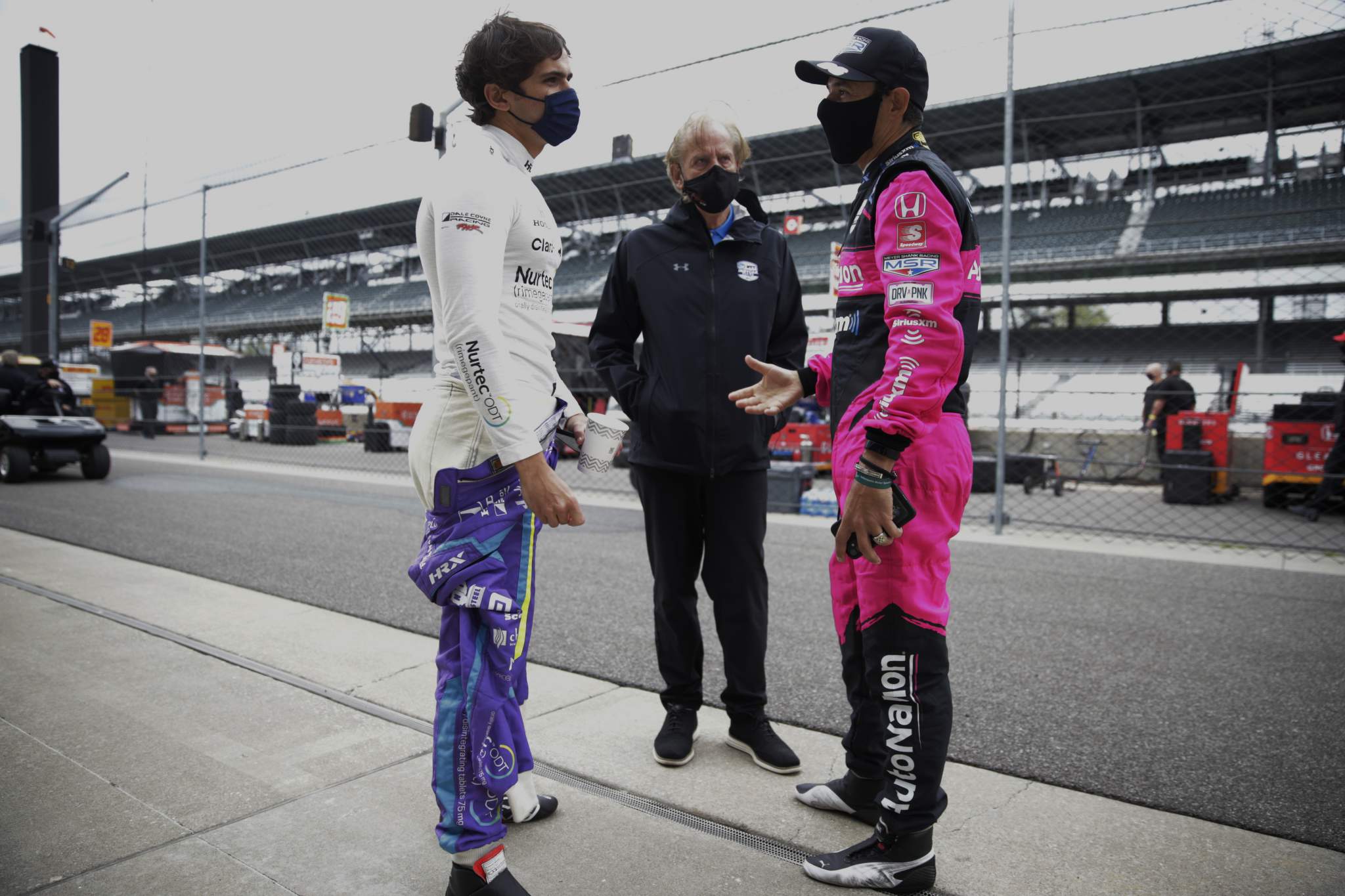
Summed up briefly, until qualifying everything was plain sailing. But, things were about to go sideways, very fast indeed.
Luyendyk went out for a morning warm-up before qualifying and narrowly avoided a massive accident when he swerved – not easy to control at 200mph+ – to avoid an errant wheel from the disintegrating car of Johnny Parsons Jr.
That sent debris through Luyendyk’s machine and lunched his engine, undoing the hard work he and the team had done to get the package perfect up until that point.
Brilliantly, the team managed to change the engine in time to get Luyendyk back out for qualifying later in the day, but immediately after start-up plumes of white smoke emerged from the Cosworth engine in the back of the Reynard chassis. It meant a switch to the back-up car.
“I thought about this not so long ago – why did we even go out?” ponders Luyendyk of the morning warm-up outing. “We didn’t have to go out, we knew what the car was capable of.
“So I took that [back-up] car out in qualifying and I did 233mph-something and I just knew to myself that’s not going to hold up for first place because it felt slow. There was a lot of drag as I turned the steering wheel in the corner.
“I could feel it was pulling down the RPMs, there was just too much friction so to speak, it wasn’t free, like the other car.”
Luyendyk was still on for pole in the back-up car, but Scott Brayton – the 1995 polesitter and still with Team Menard – did something no one expected and withdrew his second place time to qualify the back-up car he’d tested in the morning.
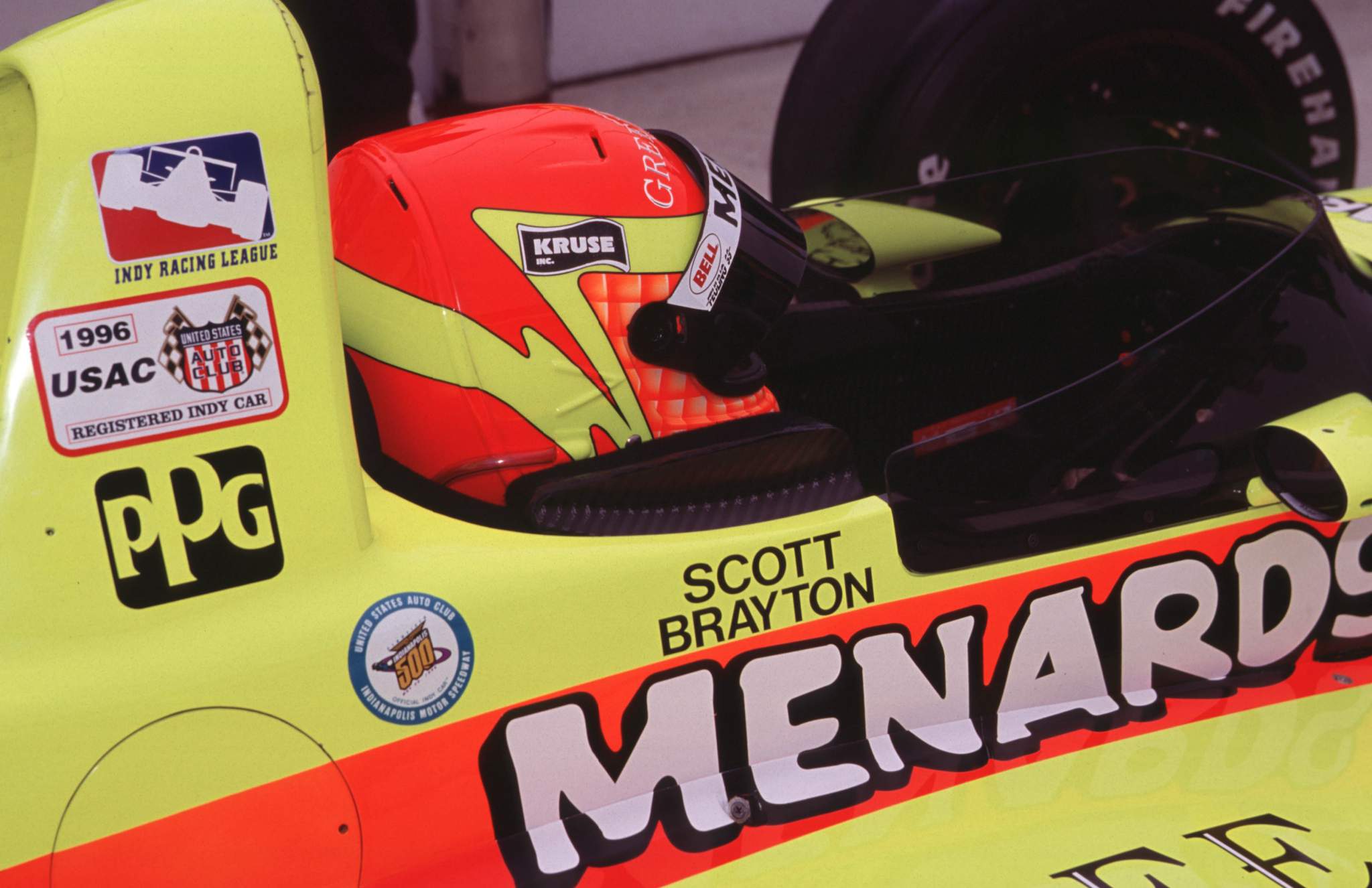
That meant surrendering his spot so if anything happened on his fresh run, and he’d potentially have to qualify the next day and start way back in the pack.
That bold decision was rewarded with pole, and Brayton revealed on exiting the cockpit that he had zero doubts about the decision to risk it and go for pole, which added salt to Luyendyk’s wounds as the car Brayton had now put on pole was Luyendyk’s from the year before!
The pain was not over for Luyendyk either, as in its haste to prepare his back-up machine after the engine woe, the team had forgotten to weigh the car and it was seven pounds underweight.
He’d lost his second-place time and would have to qualify the next day, with a best starting position of 20th on offer as the first 19 cars had sealed those spots under the format used then.
“So then we just went for the record,” adds Luyendyk, who was at least now back in the car which suffered engine difficulties the day before, the one that had looked so good in practice.
“But it was really kind of an empty feeling. I got the record, but I’m still starting 20th, which is not a good place to start.
“Everything was going so incredibly well, and I basically left the speedway at the end of May completely empty handed, I didn’t have a pole, I didn’t have a good result.
“We didn’t really have anything to show for it. So that was a big disappointment.”
There was an empty feeling for everybody at the speedway soon after qualifying, as polesitter Brayton lost control going into Turn 2 in a crash which cost him his life during a subsequent practice session.
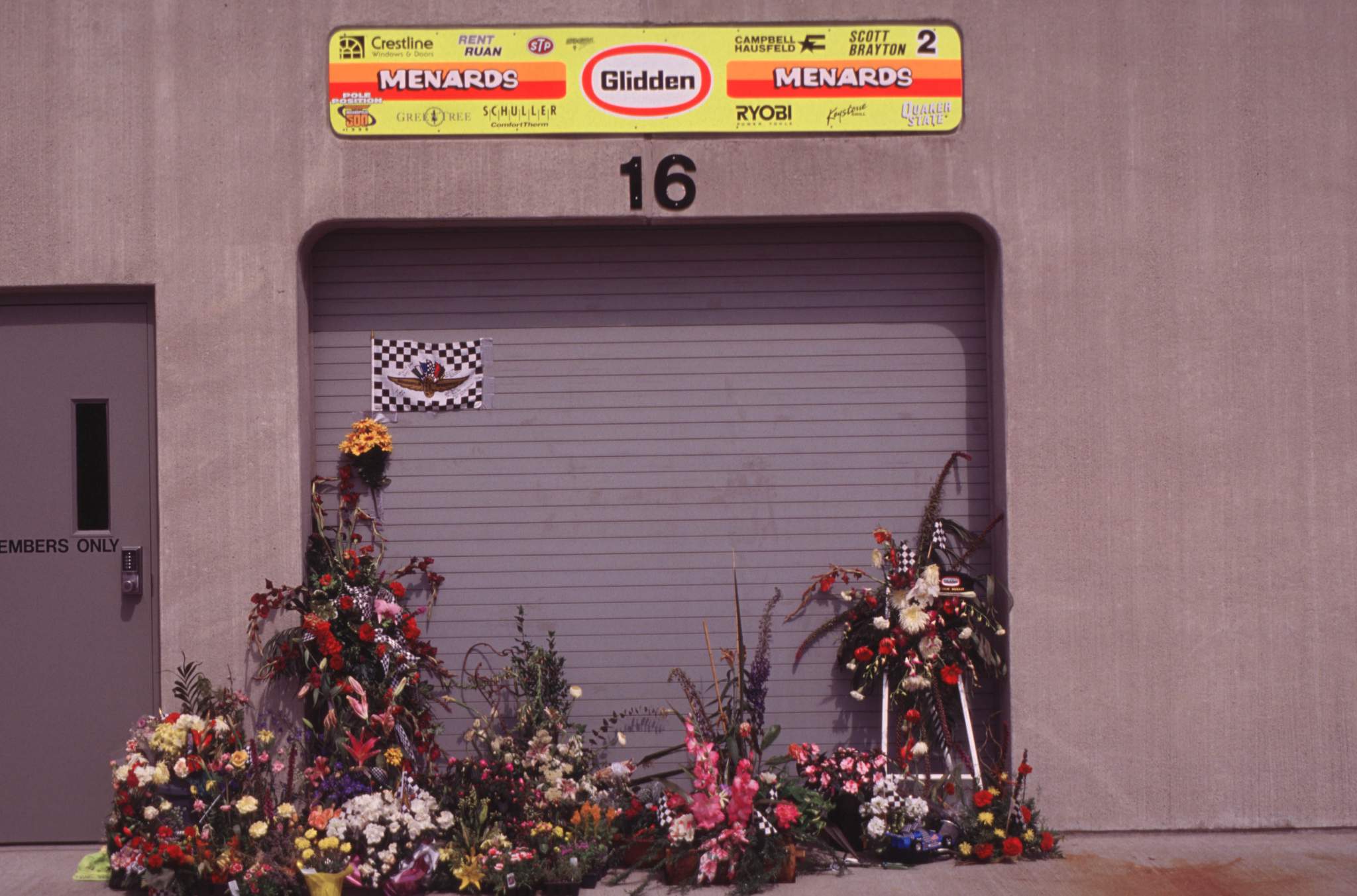
The 37-year-old had never won an IndyCar race but his pole in 1995 proved his pace and he would have been among the favourites in ’96. He is the last driver to have passed away as a result of a crash on track during the Indy 500 sessions.
In the race Brayton’s team-mate Tony Stewart – yes that Tony Stewart – honoured his memory by leading the first 31 laps while also winning rookie of the year in a race that should have been his without an infamous pop-off valve issue – a common problem at the time – that put him out of the race after 82 laps, 44 of which he led.
Ultimately Buddy Lazier (below) won his first top-tier race at the age of 28, just a few months after a crash at Phoenix caused multiple fractures to his back.
Luyendyk charged up the order from his 20th place starting spot and was a contender but stalled in a pitstop and then Eliseo Salazar turned into him on the exit of the pits. Luyendyk later retired after losing five laps through repairs.
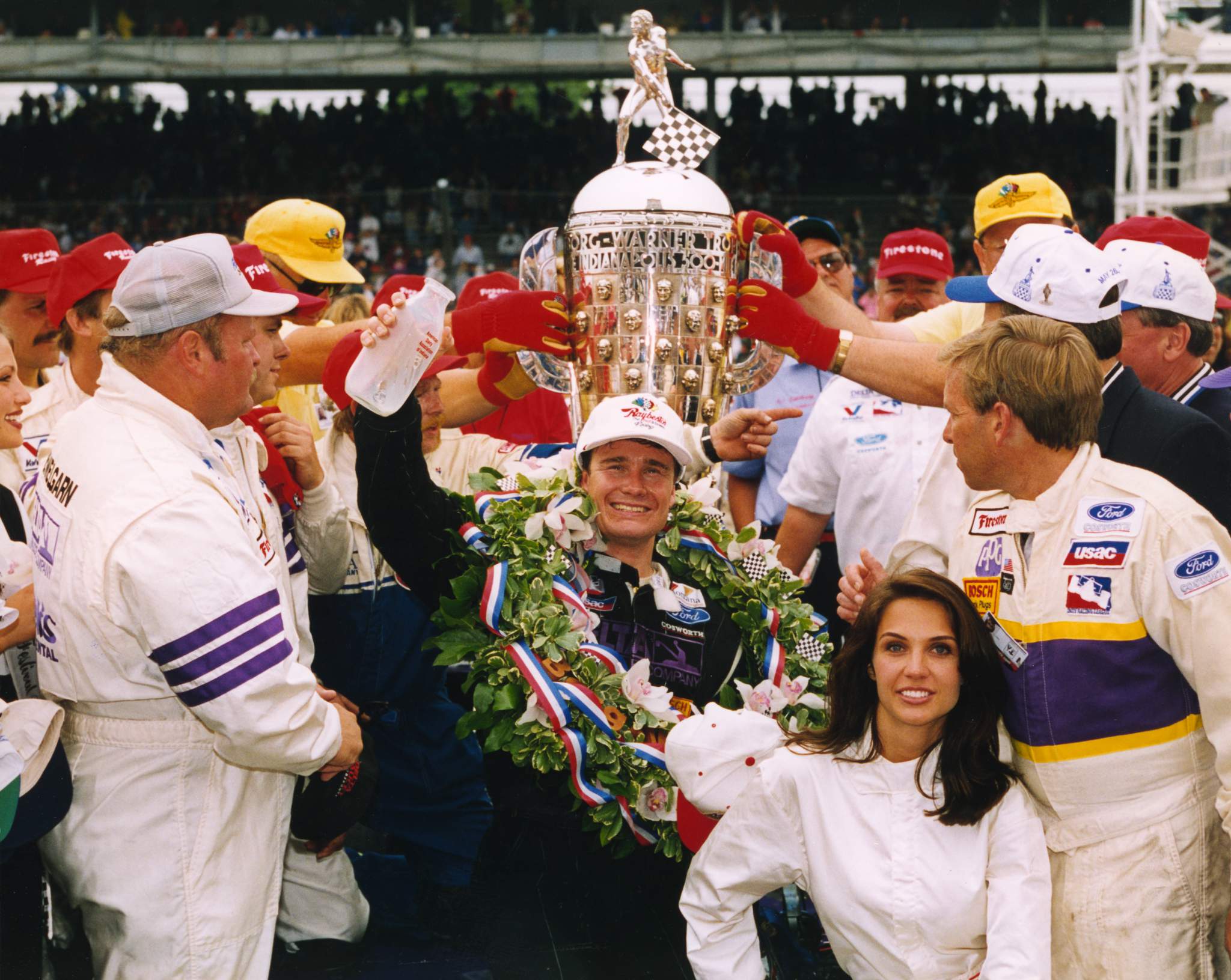
For Luyendyk, he is still lauded and hounded by journalists like me about his record qualifying run, and he’s enjoyed the interest and benefits it has brought him. But equally Luyendyk is very current – he’s an IndyCar race steward – and sees the potential boost in interest making that record breakable could bring.
“Indianapolis is a track where it’s all about speed and people bring it up quite a bit,” he says.
“I always was a big proponent of the fact that somebody could break that lap, especially considering Indy has lost a lot of ground as far as pole day used to be an amazing event, full day, 200,000 people would show up to witness in their mind hopefully a new track record.
“And that went on for years and years, of course, but it has to stop somewhere, which it basically did in 1996 – the year after (when Luyendyk won the 500 again, pictured below) they changed the cars and the pole speed was 218mph.
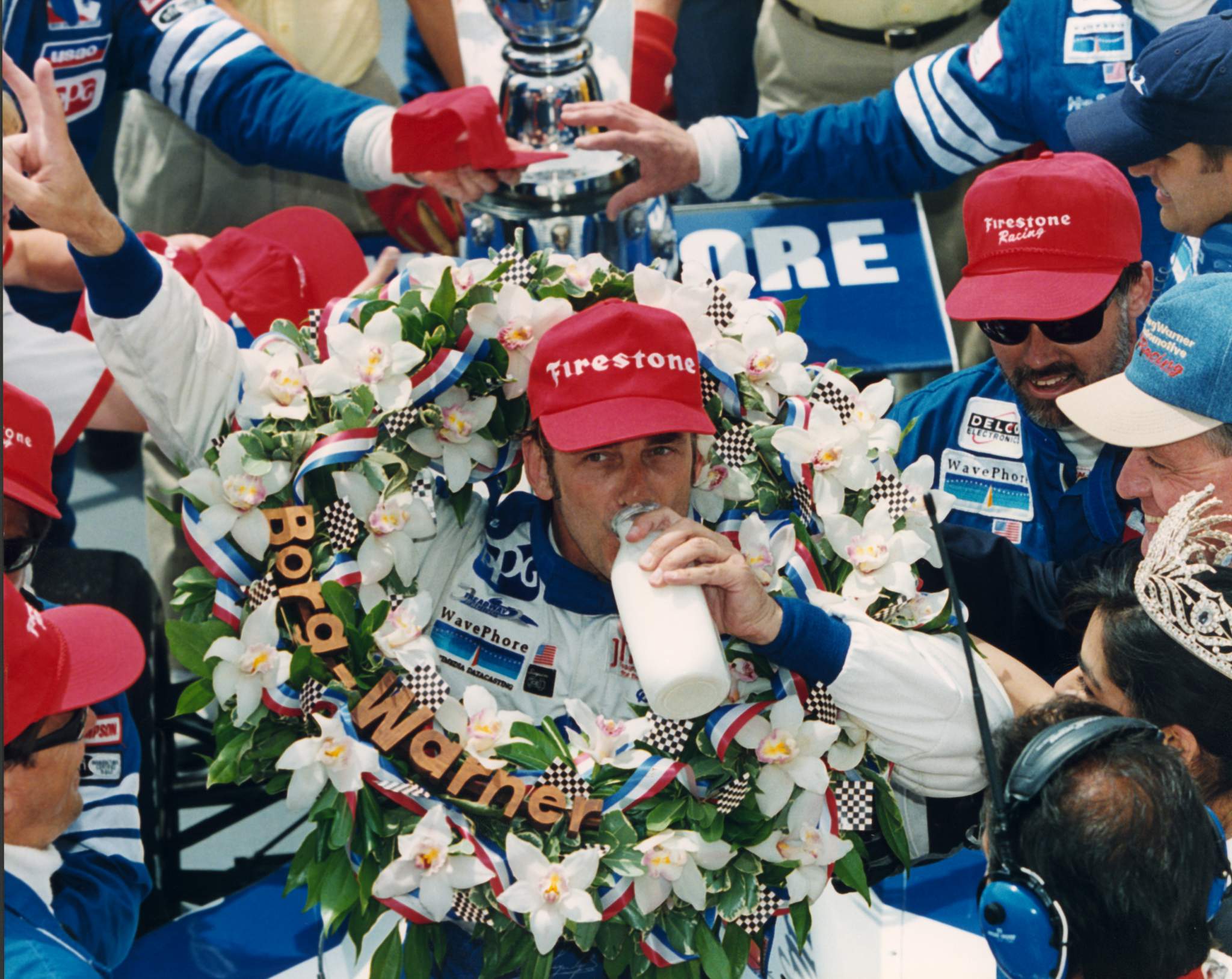
“They’ve been creeping up and the current cars could easily run 238-239mph, 240mph maybe if they had more horsepower. And they’re going to get more horsepower with the new rules coming out I believe in ’23.
“But it’s then really up to IndyCar, do they want to go that fast? They can tune them down and all that, but if they want to break the record, they could. And I personally would be a big fan of that.
“I’ve enjoyed my day in the sunshine a long time with that record.
“I would have liked to see that record being broken already in years past, but definitely in the future. I’d like to see it.
“I’d like to see the fact that people will come out on a Saturday with hundreds of thousands of people to come and see somebody break that record, that would be very cool to see.”
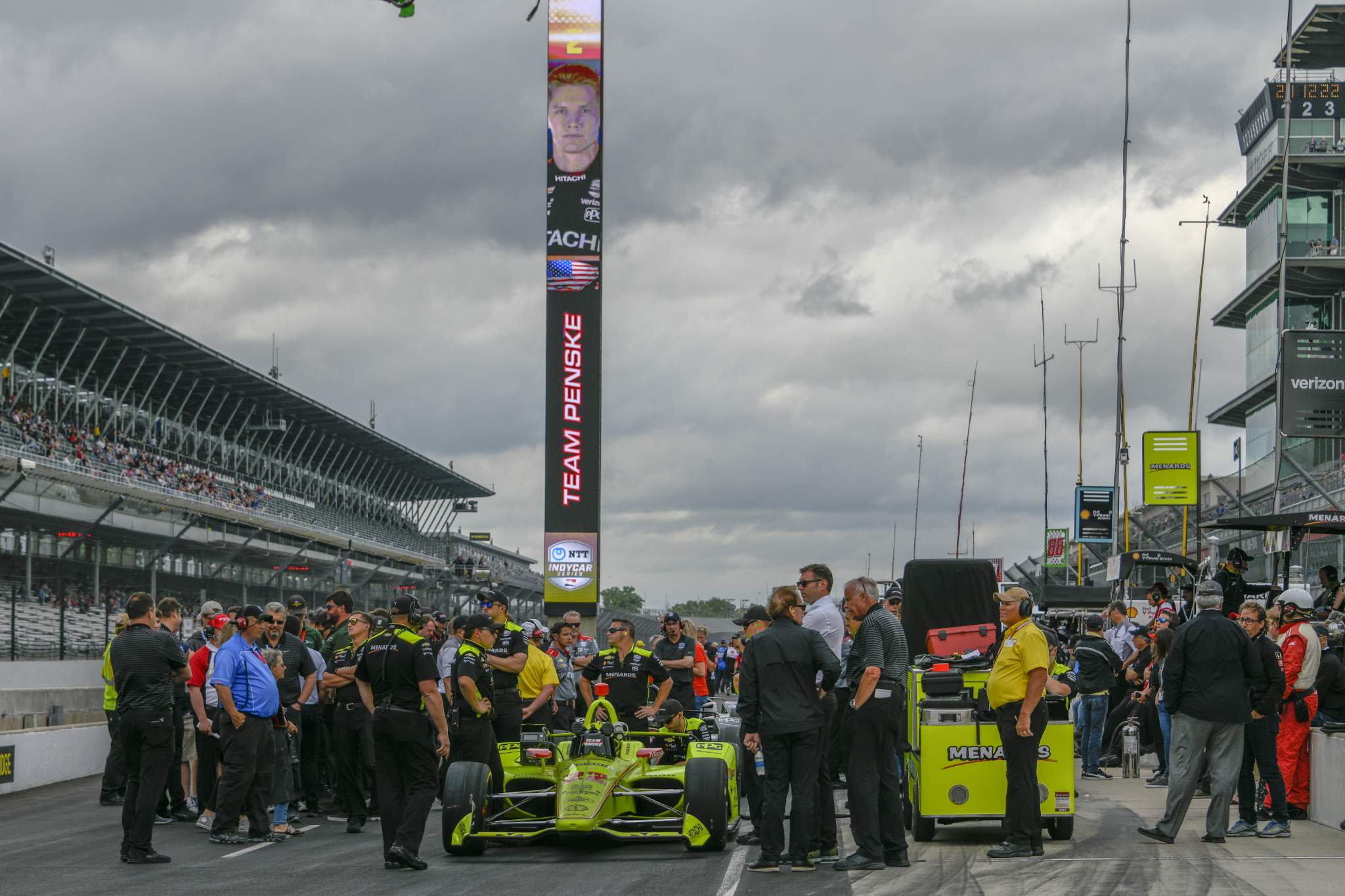
Obviously 2020 was closed to fans on pole day and as indeed was the whole event last year, but perhaps an increase in horsepower with the new hybrid regulations can electrify the crowds on pole day once more.
There’s one thing that’s for sure, there aren’t many better representatives for IndyCar than Luyendyk, and he’s represented his record well.
It’s hard to see it being broken because of the safety concerns attached to reaching those speeds, but maybe the addition of the aeroscreen will warrant an increase in speeds in the future.
We couldn’t let Luyendyk go without asking him what it feels like to reach that sacred 237.498mph at Indy. After all, he’s literally the only person who can answer the question.
“You approach the corner at 244-245mph and you just drive it into Turn 1,” he says matter of factly.
“The thing about Indy is it requires a lot of feeling from the driver. You almost know what it’s going to do before you actually enter the corner. It’s like your body is already anticipating that it might be a little bit of understeer or with oversteer.
“At the moment you start turning the wheel, you already know, ‘OK, this is good or not so good’. That feedback comes at you very quickly.
“I’d like to say that I was never afraid of running low downforce at the speedway, which gives you that advantage that you’re going to have the maximum top speed on the straightaways because you’re totally trimmed out.
“And then if you can carry that through the corners, then you’re going to have a big lap. You try to set-up the car where you hardly have any turn-in on the steering wheel, because then you have less scrub through the corners.
“You mentioned before, how do you explain to someone the difference between a normal 233mph lap and 237mph? At 233mph, you feel like you’re almost parked.”


